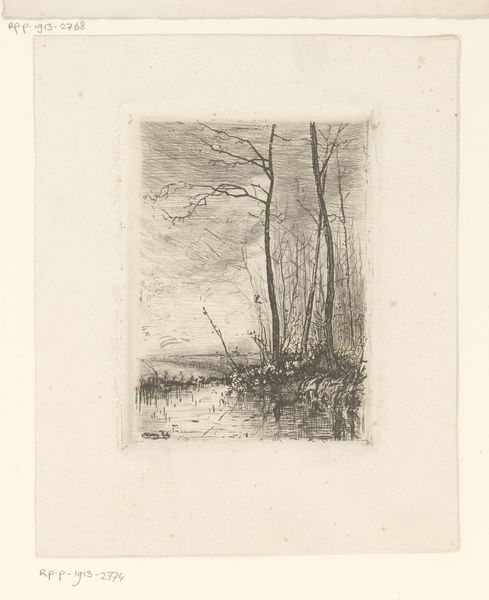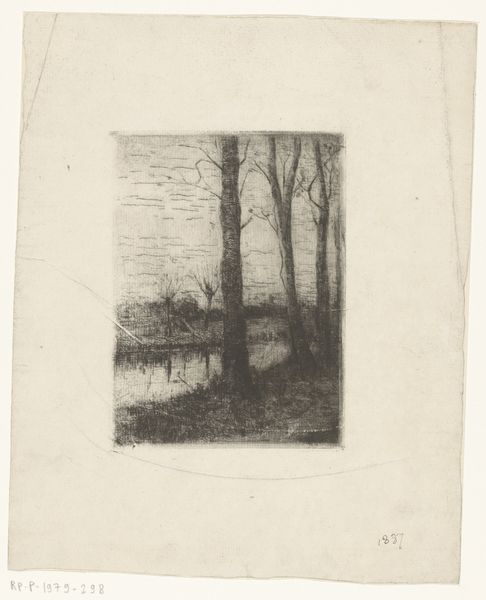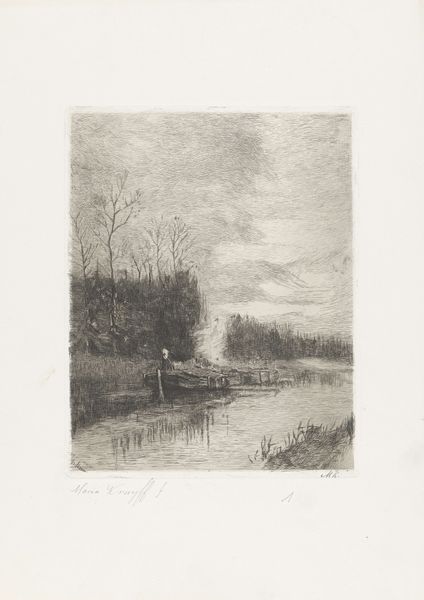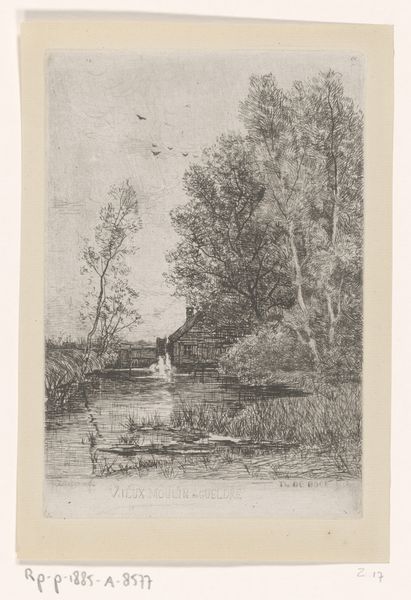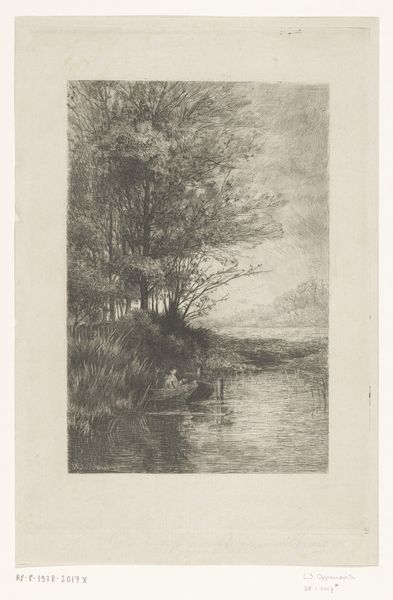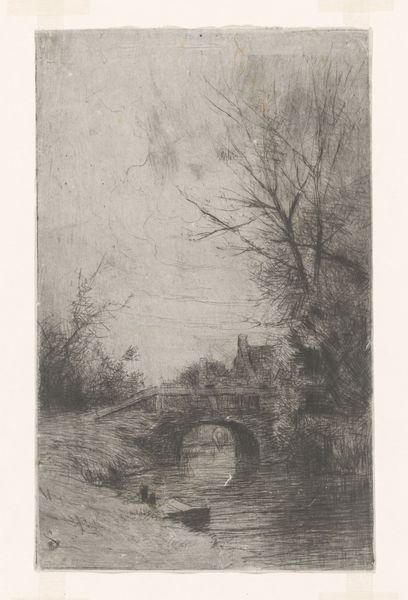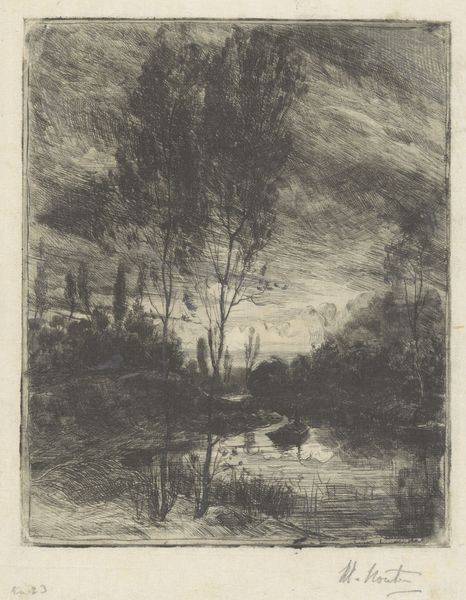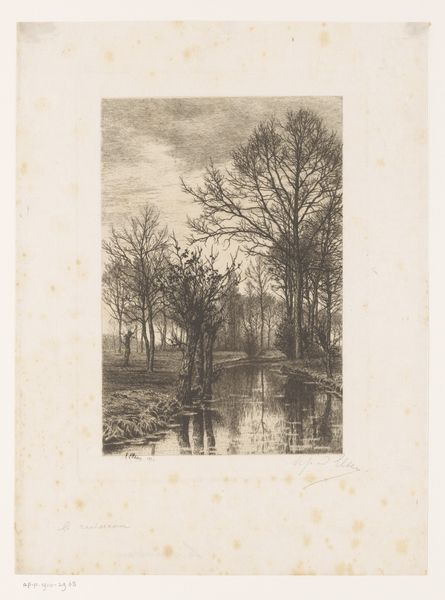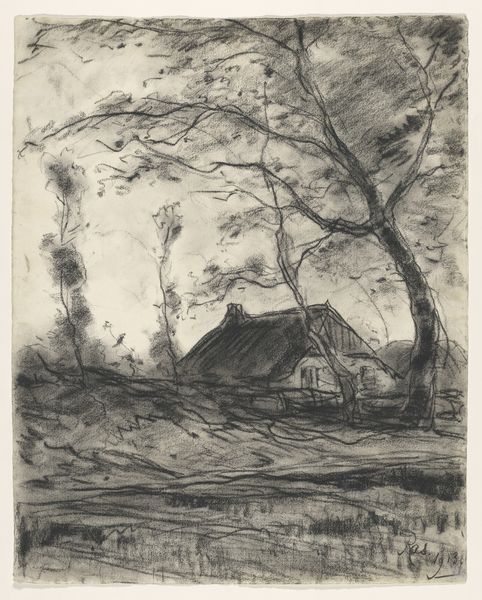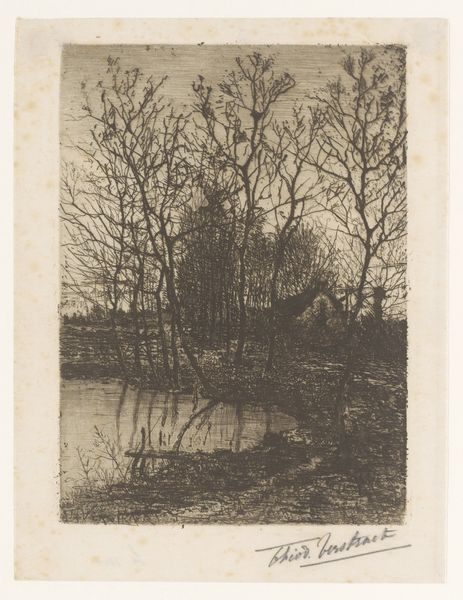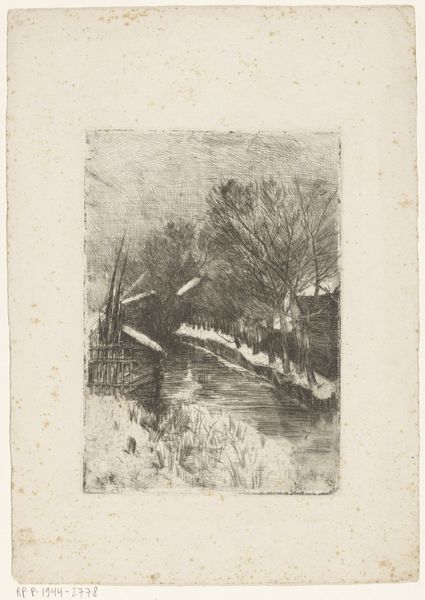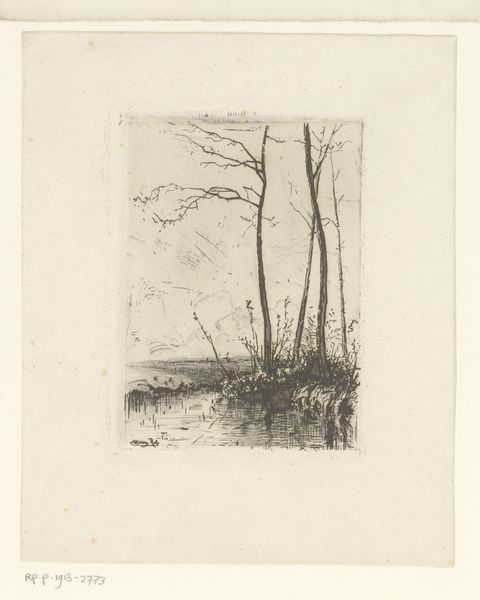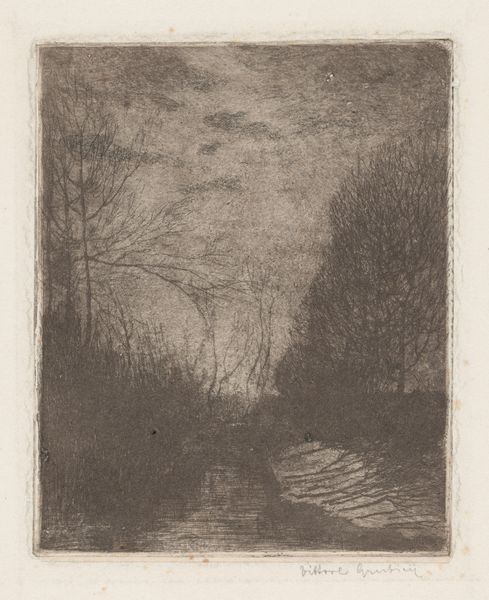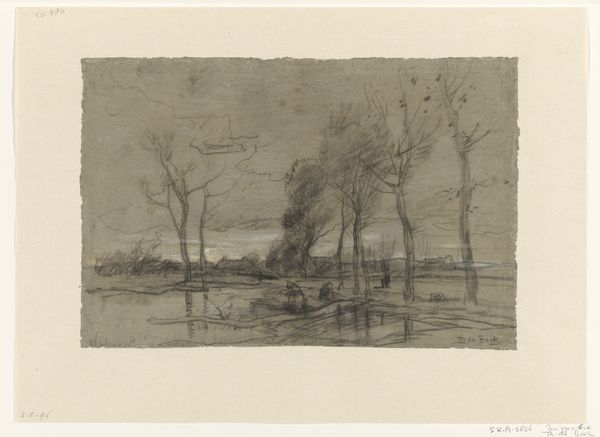
drawing, print, etching
#
drawing
# print
#
etching
#
landscape
#
river
#
watercolour illustration
#
monochrome
Dimensions: height 110 mm, width 80 mm
Copyright: Rijks Museum: Open Domain
Editor: Here we have "Landscape with a Mill by the Water" by Philip Zilcken, created between 1867 and 1890. It's an etching. The scene feels very quiet and still. What stands out to you about the composition? Curator: The rigorous tonal gradations and the textured surface are compelling, aren’t they? Note how the artist contrasts the delicate lines of the bare trees with the dense, almost opaque quality of the water’s reflection. It's a study in contrasts and delicate modulations of light and shadow. Editor: It definitely captures a certain mood with its subtle tones. Does the way Zilcken uses line to create texture inform its overall meaning? Curator: Precisely. Zilcken employs a sophisticated system of hatching and cross-hatching. Consider how these techniques sculpt the forms and establish spatial depth. The line quality contributes substantially to our experience of this work. Editor: It’s interesting how the eye moves between these intricate details, the branches for example, and the broader forms like the water and the building. The monochromatic aspect does that also, I think. Curator: It does. What do you observe in how he frames the composition itself? Notice that building nearly center and far. Is that effective in its balance with the trees on the right? Editor: It’s all incredibly balanced despite the level of detail. I hadn’t thought about how the detail also defines a monochromatic illustration of nature. It focuses on intrinsic structures by simplifying other context to near-elimination. Thanks for this viewpoint. Curator: Indeed, understanding Zilcken's technical prowess allows us a deeper insight into his artistic vision. It all is based on that original observation that form matters above all.
Comments
No comments
Be the first to comment and join the conversation on the ultimate creative platform.
